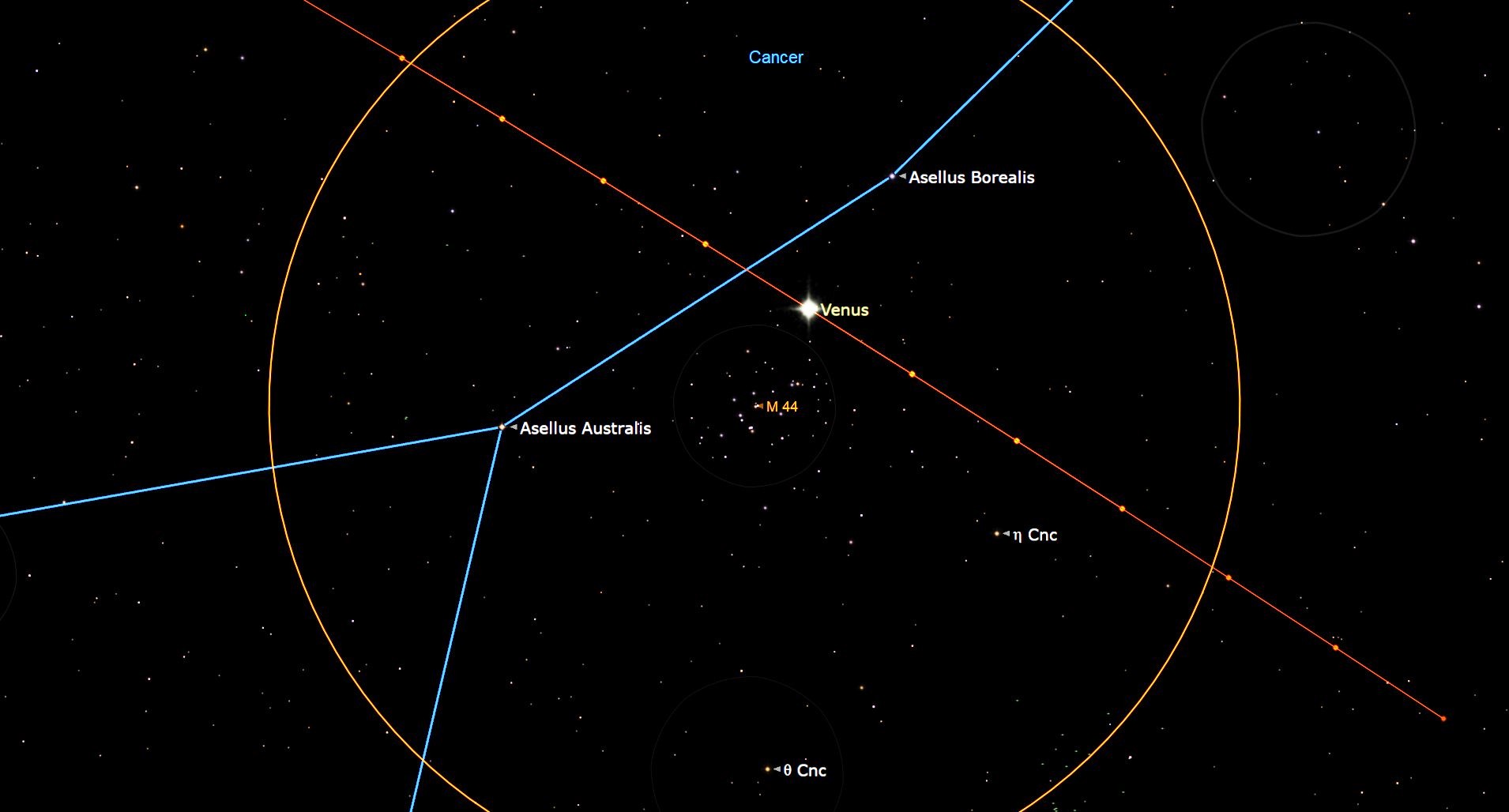Venus will buzz by the Beehive Cluster today (June 13), and you can watch the celestial meet-up live for free.
Venus will appear to pass close by Messier 44 (or M44), a dense cluster of stars in the Cancer constellation. Messier 44 goes by the more colloquial name the Beehive Cluster due to the fact that its roughly 1,000 stars look like bees swarming a hive. The cluster also goes by the name Praesepe, from the Latin word for "crib."
If conditions aren't right in your area to view this close approach of Venus and M44, you can still catch the spectacle thanks to astronomer Gianluca Masi and the Virtual Telescope Project based in Rome, Italy. The project will host a free livestream of Venus in the Beehive Cluster on its website and YouTube channel starting at 4 p.m. ET (2000 GMT) today.
Related: Night sky, June 2023: What you can see tonight [maps]


Want to get a good look at Venus or other planets in the night sky? We recommend the Celestron Astro Fi 102 as the top pick in our best beginner's telescope guide.
Messier 44 is located some 600 light-years away from Earth. Despite the fact that Venus will look like it's in the midst of the buzzing "bees" of M44, the planet is actually much closer to us than the cluster is. On average, Venus lies about 42 million miles (67 million kilometers) from Earth, though it's currently farther away than that — roughly 59 million miles (95 million km).
The already-radiant Venus will continue to brighten in the night sky this month as it approaches an inferior conjunction in August, meaning it will be the middle of a straight line between Earth and the sun. At that point, Earth's "evil twin" will be lost in the sun's glare. From that point on, the planet will begin transitioning from appearing in the evening sky to becoming a "morning star."

If you hope to take a look at Venus close-up during its evening apparition, our guides to the best telescopes and best binoculars are a great place to start.
And for tips on photographing Venus or the night sky in general, check out our guide on how to see and photograph the planets and our rundowns on the best cameras for astrophotography and best lenses for astrophotography.
Editor's note: If you get your own picture of Venus near the Beehive Cluster in the night sky and would like to share it with Space.com's readers, send your photo(s), comments, and your name and location to spacephotos@space.com.







